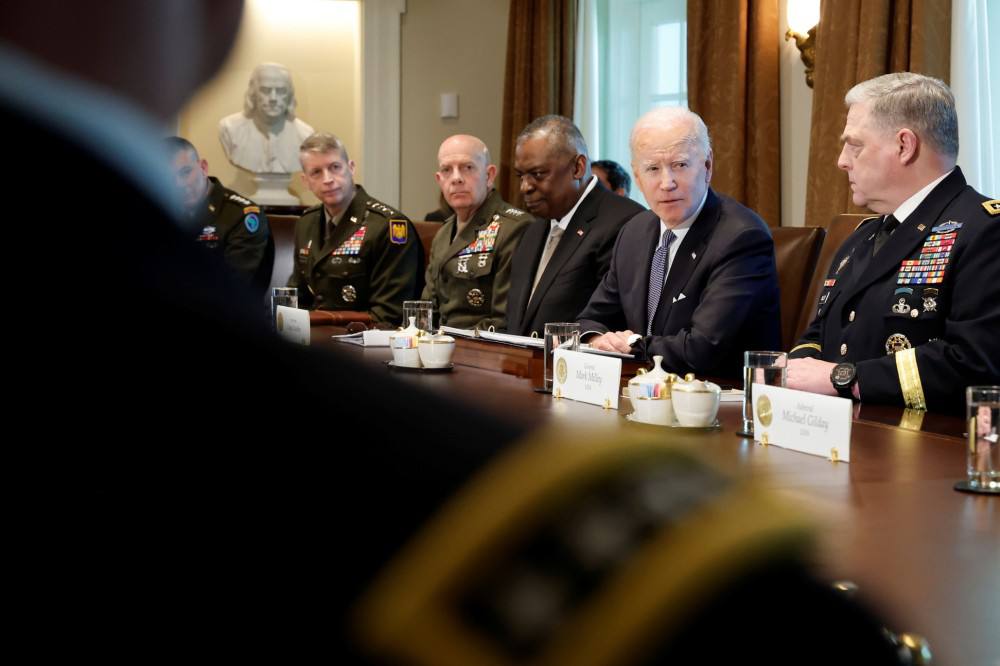Biden in limbo
Multiple attacks on US bases in the Middle East
Biden in limbo: a deadly attack on American forces on the Syria-Jordan border could escalate tensions and put the Biden administration at a crossroads, between symbolic response or the risk of escalating tensions with Iran.
The recent drone attack on the Syria-Jordan border, in which three US soldiers lost their lives and 34 others were injured, is just the latest in a series of violent actions against the United States. However, it has undoubtedly been the most serious and lethal to date. This attack, which took place on January 28th, reflects an increase in tensions and friction with Iran, despite Tehran’s denial of any involvement, Washington holds Iran responsible for this attack.
Furthermore, this thunderous attack comes at a time when rumors about the possibility of the US withdrawing from the region, especially from Iraq and Syria, are more prevalent than ever. American forces have been stationed in Syria for almost a decade to combat ISIS, and in Iraq for over twenty years without significant troop adjustments or rotations.
Therefore, the thief, who is usually referred to as the intersection of two Arab countries, sees itself as the center of escalating tensions that began in October between Israel and the Gaza Strip and have spread to the regional level in the following months. It is waiting to see how Washington will respond to the recent attack.
Insecurity of American forces on the Syria-Jordan border
On Monday, in a drone attack on a base on the Syria-Jordan border, three American soldiers were killed and at least 34 others were injured. This attack targeted facilities used by US forces in the 22nd Tower military base in Jordan, located about 20 kilometers south of the al-Tanf garrison in Syria.
However, the Jordanian government stated that contrary to the initial inspections conducted by Centcom, the US Armed Forces Command Center, this attack did not take place on Jordanian soil. Despite all these factors, hostilities have now engulfed the entire region from Lebanon to the Red Sea. Since October, Syria and Iraq have been the scenes of multiple exchanges of fire between US military forces and Iran-backed militias.
According to tracking done by the Washington Institute for Near East Policy, American forces have experienced close to 170 attacks from the beginning of the crisis until now, which have so far been limited to retaliatory actions.
What is America doing in Syria and Iraq?
America’s presence in Syria dates back to 2014 when the United States launched Operation Inherent Resolve, a military intervention against the Islamic State (ISIS) in response to a formal request from the Iraqi government.
In June of that same year, the newly established caliphate declared the nullification of the borders between the two countries in order to create a unified territory of its own. US air forces, with the support of ground operations by the People’s Protection Units (YPG), participated in pushing back ISIS militants until the fall of Baghuz in eastern Syria in March 2019.
Since the time of the Barack Obama and then Donald Trump administrations, until the arrival of Joe Biden, Washington initiated a project to reduce its presence in the region, with the aim of concentrating its forces in other areas to contain China, especially in the Pacific Ocean.
Among these, Donald Trump’s decision to withdraw US forces from northern Syria in October 2019 caused a lot of controversy and discussion, without considering the fluctuations over the years. It is estimated that Washington currently has 800 to 900 soldiers in Syria and over 2,500 soldiers in Iraq.
Imminent withdrawal
With the escalation of tensions between Hamas and Israel since October 7th, the United States has significantly increased its military presence in the Middle East as a deterrent tool to prevent further steps in escalating regional tensions by Iran and its regional allies supporting Tehran.
Nevertheless, it seems that the long-term strategic path, at least as far as it relates to Syria and Iraq, still involves the withdrawal of forces and separation. In this regard, official meetings with Baghdad are underway to discuss the possible withdrawal of American and foreign forces. However, as far as Syria is concerned, all of these are currently just rumors and speculation.
However, the rumors that are being pushed day by day, as Charles Lester writes in Farin Policy columns, suggest that the United States’ withdrawal from this country is on the table at the State Department and emphasizes that this action will be a gift to the Islamic government.
The Al-Monitor news website assures that negotiations are underway at the Pentagon, and according to them, they are even working on a military agreement between the Kurdish armed groups and the Bashar al-Assad regime to neutralize the possible return of ISIS. At the same time, the Politico website also states that the United States is reconsidering its decision to withdraw its intelligence and military resources from the Middle East and move towards strategic goals in Russia and China.
Biden at a crossroads
President Biden has promised that Washington will not allow the attack on the Syrian and Jordanian border, for which the Islamic Resistance Group in Iraq, a coalition of pro-Iran Shiite paramilitaries, is responsible, to go unpunished. Unlike many previous occasions, for example, during Christmas, an Iraqi soldier fell into a coma and this attack resulted in the death of three American soldiers on duty, sparking heated debates in America.
The Biden administration is now at a crossroads. On one hand, it cannot afford to simply rely on symbolic reactions as it did in previous cases, because this attack was undoubtedly more serious than previous ones. On the other hand, there is a danger that an excessive reaction against Tehran, which has quickly denied its involvement in this attack, could create a real military crisis that would lead to an unpredictable escalation.
The fact that the United States has not shown any reaction after several days indicates that Washington is studying a comprehensive response that requires more precise planning. On the other hand, Tehran rejects any involvement in this attack, and it is not a coincidence that on Wednesday night, Iraqi paramilitary forces known as Kataib Hezbollah, which support Iran, announced the suspension of attacks against US forces. Could this be a sign of goodwill to prevent further escalation?
The editorial board of The Wall Street Journal, referring to the attack on Tower 22, writes that this would have happened sooner or later. In the 1970s, Iran played a role in the hostage crisis that led to the downfall of President Jimmy Carter. Therefore, if President Biden does not respond forcefully enough, his message must be understood well, and he should fear a repeat of Jimmy Carter’s fate.
Therefore, the uncertain situation will have a negative impact on public opinion in America, which is currently voting. Even a small mistake in a scene of a famous and unpopular war, such as the Middle East, can cost President Biden dearly. He is the same person who began his presidency with the disastrous and devastating withdrawal of US forces from Afghanistan in August 2021.


